
TOP MANAGERIAL STRATEGIES FOR TODAY'S MULTIGENERATIONAL WORKPLACE - Heide Abelli, Co-Founder, SageX Inc. 15 10 21 27 6 Tips To Lead And Manage The 5-Generation Workforce - Jason Richmond, Ideal Outcomes, Inc. Timeless Leadership Traits For Effective Leadership In Any Environment - Robert L. Dilenschneider, The Dilenschneider Group 5 Titanic Lessons For Leaders To Keep Their Crew Afloat - Diane O’Connell, Sorting it Out, Inc. 3 Things Gen Z Teaches Us About Quiet Quitting - Jan Bruce, meQuilibrium OCTOBER 2023 • Vol. 40 • No. 10 (ISSN 2562-0711)


Top Managerial Strategies For Today's Multigenerational Workplace Building stronger teams through intergenerational collaboration - Heide Abelli, Co-Founder, SageX Inc. 06 INDEX On the Cover Articles 13 Towards Greater Psychological Safety In The Workplace Empowering employee expression - Vicky Smith, Senior Consultant and Lesley Cooper, Owner, WorkingWell Limited 18 5 Strategy Mistakes That Affect Innovation Navigating the path to success - Dr. Evans Baiya, Co-creator, The Innovator’s Advantage Academy 26 How Do You Know When It Is Time To Pivot – And What To Do About It The value of contextual knowledge in strategic decision-making - Patrick Esposito, President, ACME General Corp Leadership Excellence OCTOBER 2023 Vol.40 No.10 (ISSN 2562-0711) 31 The Four CORE Components Needed To Shift Companies Forward For The Future Of Work Creating a resilient workplace - Dan Michelson, CEO and Founder, InCommon
6 Tips To Lead And Manage The 5-Generation

Workforce
From stereotypes to synergy
- Jason Richmond, CEO and Chief Culture Officer, Ideal Outcomes, Inc
Timeless Leadership Traits For Effective Leadership In Any Environment
Fostering success amid modern business challenges
 - Robert L. Dilenschneider, Founder, The Dilenschneider Group
- Robert L. Dilenschneider, Founder, The Dilenschneider Group
5 Titanic Lessons For Leaders To Keep Their Crew Afloat
What’s sinking your employee’s wellbeing?
-
Diane O’Connell, Workplace Culture Reinvention Strategist, Sorting it Out, Inc.
29
3
Things Gen Z Teaches Us About Quiet Quitting
Strategies for workplace harmony

- Jan Bruce, Co-Founder, MeQuilibrium

INDEX Top Picks 10 15 21
Editorial Purpose
Our mission is to promote personal and professional development based on constructive values, sound ethics, and timeless principles.
Excellence Publications
Debbie McGrath CEO, HR.com - Publisher
Sue Kelley Director (Product, Marketing, and Research)
Babitha Balakrishnan and Deepa Damodaran
Excellence Publications Managers and Editors
Leadership Excellence Team
Babitha Balakrishnan Editor
Chinnavel Design and Layout (Digital Magazine)
Chandra Shekar Magazine (Online Version)
Submissions & Correspondence
Please send any correspondence, articles, letters to the editor, and requests to reprint, republish, or excerpt articles to ePubEditors@hr.com
For customer service, or information on products and services, call 1-877-472-6648
For Advertising Opportunities, email: sales@hr.com
Leadership Excellence (ISSN 2562-0711)
is published monthly by HR.com Limited, 56 Malone Road, Jacksons Point, Ontario L0E 1L0
Internet Address: www.hr.com
Copyright © 2023 HR.com. No part of this publication may be reproduced or transmitted in any
without written permission from the publisher. Quotations must be credited.
Debbie Mcgrath Publisher, HR.com
Babitha Balakrishnan Editor, Leadership Excellence

Leadership in a Changing World: Age Diversity and Wellbeing
Inthe ever-evolving realm of contemporary business, leaders encounter a multitude of obstacles, spanning from adeptly managing a multigenerational workforce to placing employee well-being at the forefront while refining the enduring qualities of successful leadership. Can leaders skillfully navigate these complexities?
The October edition of Leadership Excellence includes informative articles that offer valuable insights and strategies for today's leaders..
Top Managerial Strategies For Today's Multigenerational Workplace by Heide Abelli (SageX Inc.) provides a roadmap for harnessing the power of age diversity in organizations. The article underscores the importance of pairing age-diverse team members, implementing mutual mentoring programs, addressing age-related biases, and promoting age diversity within teams.
In Jason Richmond's (Ideal Outcomes, Inc.) article, 6 Tips To Lead And Manage The 5-Generation Workforce, the central theme revolves around effective leadership and management strategies required to steer a workforce encompassing five different generations.
Diane O’Connell's (Sorting it Out, Inc.) article, 5 Titanic Lessons For Leaders To Keep Their Crew Afloat, draws

parallels between the tragic sinking of the Titanic and the challenges faced in workplace wellbeing cultures. It offers valuable insights into the importance of mental health support, clear communication, recognizing distress signals, and adequately resourcing wellbeing programs.
In his article, Timeless Leadership Traits For Effective Leadership In Any Environment, Robert L. Dilenschneider (The Dilenschneider Group) underscores six enduring leadership qualities that serve as a steadfast guiding light for leaders navigating the intricacies of today's dynamic business landscape.
The evolving nature of today's workplace demands leaders who embody resilience and adaptability. The strategies highlighted in the magazine empower leaders to cultivate inclusive environments, champion mental well-being, bridge generational gaps, and uphold enduring values. We hope you find this edition of Leadership Excellence useful and informative in your leadership journey. Your feedback and suggestions on our articles are always welcome.
Happy Reading!
Disclaimer: The views, information, or opinions expressed in the Excellence ePublications are solely those of the authors and do not necessarily represent those of HR.com and its employees. Under no circumstances shall HR.com or its partners or affiliates be responsible or liable for any indirect or incidental damages arising out of these opinions and content.
NOTE
EDITOR’S
form
Write to the Editor at ePubEditors@hr.com
In a world of unparalleled challenges (global pandemic, racial injustice, political rivalry, digital 4.0, emotional malaise), uncertainty reigns. Finding opportunity in this context requires harnessing uncertainty and harnessing starts with reliable, valid, timely, and useful information. The Excellence publications are a superb source of such information. The authors provide insights with impact that will guide thought and action.

Excellence publications are my ‘go-to’ resource for contemporary and actionable information to improve leadership, engagement, results, and retention. Each edition offers rich and diverse perspectives for improving the employee experience and the workplace in general.


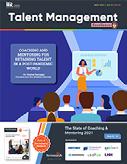





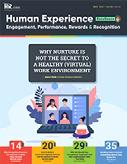
I regularly read and contribute to Leadership Excellence and Talent Management Excellence. I use many of the articles I read to augment my own presentations and I often share the articles with my clients. They are always quick, right on target for the latest issues in my field, and appreciated by my clients. If you want to stay up to date on the latest HR trends, choose a few of the different issues from the Excellence series of publications.


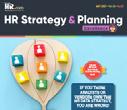

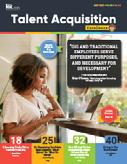
 Dave Ulrich
Rensis Likert Professor, Ross School of Business, University of Michigan Partner, The RBL Group
Julie Winkle Giulioni Author, Virtual /Live Keynote Presenter, Inc.’s Top 100 Leadership Speakers
Dr. Beverly Kaye CEO, BevKaye&Co.
Dave Ulrich
Rensis Likert Professor, Ross School of Business, University of Michigan Partner, The RBL Group
Julie Winkle Giulioni Author, Virtual /Live Keynote Presenter, Inc.’s Top 100 Leadership Speakers
Dr. Beverly Kaye CEO, BevKaye&Co.
WHY EXCELLENCE PUBLICATIONS?
We’re eager to hear your feedback on our magazines. Let us know your thoughts at ePubEditors@hr.com
Top Managerial Strategies For Today's Multigenerational Workplace
Building stronger teams through intergenerational collaboration
 By Heide Abelli, SageX Inc
By Heide Abelli, SageX Inc
With five generations in today’s workforce, the Silent Generation, Baby Boomers, Generation X, Millennials, and Generation Z, age diversity has never been more ripe with opportunity for organizations than it is today. But if managers fail to capitalize on the opportunity that age diversity presents, then perceived divides and barriers can actually cause harm by stirring up mistrust or even contempt.
The good news is that there are 4 simple actions that managers can put into play in order to take advantage of the age diversity on their teams.
Leadership Excellence presented by HR.com October 2023 6 Submit Your Articles
COVER
ARTICLE
Thoughtfully Pair Up Age-Diverse Team Members on Strategic Assignments
When managers have a tough assignment to delegate, instead of handing it to a single individual on the team, they should consider pairing up an older team member with a younger member of the team so they can tackle the project together. In addition to recognizing and utilizing the unique strengths of different age groups, it helps
build trust and mutual respect. It can also lead to more innovative solutions and better problemsolving.
Finally, doing this helps team members better understand the areas of expertise, skills, experience and knowledge that individuals from different generations bring to bear. The primary objective is reciprocal education, where individuals of all age groups are both instructors and learners.

Understanding differences through joint project work also brings employees who may not ordinarily socialize in the workplace closer together.
Implement a Mutual Mentoring Program
Reverse mentoring programs, where younger individuals guide their older colleagues in acquiring new abilities, often focusing on technological expertise, have become popular in many organizations. But a better approach is two-way, mutual mentoring. There are many ways to open the lines of communication in an organization and mutual mentoring is a great one. Managers must reinforce the fact that successful mentoring takes commitment to learn from others because substantive progress in mutual mentoring occurs only when people are open-minded to learning from mentors, regardless of their age. There needs to be a real willingness on the part of both parties to lean into the richness of the other person’s knowledge and experiences.
Managers need to pay special attention to the selection of mutual mentors. The matching should be nonthreatening and supportive so that the educational experience for both parties is optimized. It’s helpful if the two parties share a common objective and if there is at least some level of trust between them. Some team members will never make good mentors and that must also be acknowledged in a manager’s thoughtful selection process.
Leadership Excellence presented by HR.com October 2023 7 Submit Your Articles Top Managerial Strategies For Today's Multigenerational Workplace
Create Awareness for the Potential of Age-Related Bias
Managers can assist staff in identifying any age-related prejudices they might have. They should promote a culture where all team members are receptive to feedback and mindful of how assumptions related to age can harm the cohesiveness, commitment, and effectiveness of the team. Disputes across generations often stem from assumptions about viewpoints and values versus observable behaviors. For example.
Millennials and Gen Zers, who grew up during the social media era, often believe that leadership is earned through followership rather than positional authority. They seek opportunities to share their ideas and stimulate change across the organization, in addition to acquiring diverse skills and experiences in a non-linear manner. This can create some tension with Baby Boomers and Gen Xers who still hold onto legacy views of leadership and pursue more defined, sequential approaches to getting ahead in the organization.
Friction can also be sparked by new technologies and fluctuating work patterns as Millennials and Gen Zers push the organizations to adapt and evolve faster and older generations try to keep pace. Generational differences in basic work styles and preferences can also create issues. For example, Gen Xers can be highly independent and
more self-directed in contrast to younger generations which can create tension in intersecting workplace interactions. It’s key for managers to open up lines of communication around common age-related tensions. They should invite candid discussion and solicit and act on feedback from team members of all ages about the team’s working environment and how it can be improved. If they identify bias, managers should actively work to challenge and change age-related stereotypes within the team. And, as always, managers must be good role models by setting an example through their leadership of what it means to value and respect diversity of all kinds, including age.
Strive for Age Diversity in Overall Team Composition
Teams with members from various age groups are rife with unique talents, knowledge, and experience. When managed well, collective outcomes of age-diverse teams can be superior to more age-homogenous teams. For example, an age-diverse product development team combines the extensive experience and broad network of client relationships of older team members with the innovative perspectives and tech savviness of the younger participants. Managers should therefore keep an eye on age diversity within their teams and look to create more diversity if the team is too age-homogenous.
Capitalizing on age-related diversity has been a source of success for human populations since the beginning of our
species. We need only to look at how primitive tribes ensured their ongoing success: they fostered connections between older and younger generations and promoted the transfer of knowledge, wisdom, and values across generations. Intergenerational cohesion strengthened the overall fabric of the tribe. So too can intergenerational cohesion strengthen the fabric of the modern team, with the proactive support of a modern manager as a tribal leader.
Heide Abelli is the Co-founder of SageX Inc She is an Adjunct Professor of Management at Boston College, where she has taught Gen Z students for nearly a decade. Heidi is an accomplished executive, who prior to SageX, has held senior leadership positions at leading educational technology and training providers such as Skillsoft and Harvard Business Publishing, where she developed award-winning, ground-breaking corporate training solutions. She is a seasoned veteran of product development, innovation and product management in the fields of corporate training and ed tech. Heide is a globally recognized subject matter expert in the areas of leadership, management, general business skills, the unique skills required for success in the digital economy, employee learning and development and effective corporate training practices.
Would you like to comment?

Leadership Excellence presented by HR.com October 2023 8 Submit Your Articles
Top Managerial Strategies For Today's Multigenerational Workplace




Discover top-notch HR & business insights from 40+ industry leaders and earn SHRM & HRCI recertification credits! HR Virtual Summit Save your Seat Thursday, November 2, 2023 8 AM–1:30 PM PT
6 Tips To Lead And Manage The 5-Generation Workforce
From stereotypes to synergy
By Jason Richmond, Ideal Outcomes, Inc.
For the first time ever, there are five generations in the workforce which, when you think about it, means that employees could be 50 years apart in age. Obviously there’s a vast difference in outlook between a 70-year-old and a 20-year-old that presents both challenges and opportunities.
How do you lead and manage a multi-generational workforce? What do you need to know about the expectations and talents of respective generations?

What can you do to leverage the differences to the benefit of your organization?
First, let’s look at these generations and the characteristics attributed to each while also bearing in mind at the outset that such stereotypes often don’t run true in the real world. And it’s essential to break down any barriers that are created in the workplace when these assumptions, which tend to highlight the differences, are widespread.
Leadership Excellence presented by HR.com October 2023 10 Submit Your Articles
TOP PICK
Silent Generation (1928-1945): Yes, there are still individuals from this generation actively working today. Some never stopped; others have come out of retirement. The clichéd view of them is that they’re likely to be traditionalists. They’re conservative, loyal workers who respect authority and may be resistant to change.
Baby Boomers (1946-1964): This generation is “credited” with being workaholics. They’re seen as being willing to put in the hours, are dedicated to their careers, highly competitive, and focused on success. They might prefer sitting down for face-toface meetings rather than communicating via email or instant messaging.
Generation X (1965-1979): Gen Xers are regarded as individuals who place a high value on a work-life balance and prefer to work independently rather than in teams. The negative rap is that while resourceful and flexible they have an attitude of not caring what people think about them.

Millennials (1980-1996): Many people in this group are said to be social and environmental proponents who want to be involved in meaningful
projects. On the downside, they’re viewed as the generation that wants to get a trophy for participating, may not have the strongest of work ethics, and think nothing of frequently switching jobs.
Generation Z (1997-2012): The most tech-savvy of the generations, Gen Z employees may well display an entrepreneurial flair but their focus on communicating through digital channels may mean they’re lacking interpersonal skills, even though they promote diversity and inclusion. And—maybe they aspire to be TikTok stars!
So, now we’ve looked at the stereotypes it’s important to appreciate that they can create misunderstandings, miscommunications—and missed opportunities. As Dr. Paul Redmond, director of student experience and enhancement at the University of Liverpool, UK, and author on generational theory, puts it, “Each generation imagines itself to be more intelligent than the one that went before it, and wiser than the one that comes after it. For businesses, the challenge is in understanding and leveraging these generational differences to get the best out of everyone.”
Leadership Excellence presented by HR.com October 2023 11 Submit Your Articles
6 Tips To Lead And Manage The 5-Generation Workforce
In leading and managing these diverse groups, here are some things you can do to create an effective, productive, and culturally healthy environment.
Avoid Stereotyping
First of all, be careful not to pigeonhole employees based on the common generational stereotypes. And encourage employees to view each other as unique people with their own set of talents rather than through the lens of an age difference. Consider setting up workshops to highlight generational differences so employees become aware of any in-built biases.
Create Diverse Teams
Recognize that a multi-generational team offers a mix of experience, innovation, and varied perspectives. This diversity can lead to richer brainstorming sessions, stronger team dynamics, more balanced decision-making, and a wider range of solutions. Highlight to employees the benefits of these teams and the value of working together.
Respect the Individual
Build a workplace culture where respect is paramount regardless of age. Encourage employees to look for the strengths and attributes that their older and younger colleagues bring to the table. Encourage them to appreciate and celebrate their different talents.
Cross-Generational Mentoring
Establish mentoring programs where older and younger employees can learn from each other. An older worker, for instance, may well have the unmatched experience of having reinvented themselves multiple times throughout their career while a Gen Z employee is more likely to be up-to-speed with the latest advances in technology.

Communication Is Key
You don’t need five different communication styles for the five generations but it’s important to appreciate that people absorb information in different ways and that you should seek to transmit your messaging in multiple ways—in person both individually and in groups, by email, Zoom, long-form and short-term, visually and in writing. By doing this you’’ make sure your message sinks home.
Career Development
While younger employees might want growth opportunities, older employees might want legacy projects or the satisfaction of mentoring opportunities. Ensure that you offer programs across the board so that there is something for everyone.
Final Thoughts
Each generation brings its own set of values, perspectives, and work habits. Leading such a diverse group can be challenging but also incredibly rewarding.
Abandon the well-worn tropes that the oldsters have no idea how to use integrative AI or that youngsters only real desire in life is to become social media influencers. Understand that a Baby Boomer who has been used to, and maybe still prefers, a 9-to-5, Monday-to-Friday schedule and a Gen Zer who prefers flexible, hybrid work that suits him as a night owl can be equally productive.
Recognizing the differences and similarities, and finding ways to harmonize them, is crucial for success.
Would you like to comment?
Leadership Excellence presented by HR.com October 2023 12 Submit Your Articles
Jason Richmond is the CEO and Chief Culture Officer at Ideal Outcomes, Inc.
6 Tips To Lead And Manage The 5-Generation Workforce
Towards Greater Psychological Safety In The Workplace
Empowering employee expression
By Vicky Smith, WorkingWell and Lesley Cooper, WorkingWell
Intoday’s dynamic work environment, an increasingly vital question arises: how can organizations go about creating a culture where employees feel empowered to express themselves? How is it possible to make employees feel psychologically safer to speak up and share their insights?
Psychological safety was first defined in the 1960s and has more recently been made popular by Harvard Business School psychologist Amy Edmondson. At an individual and team level, the current definition of psychological safety is aligned with the sense of feeling safe to voice ideas, seek and provide feedback, collaborate with others, and experiment with new ways of working. People must also feel able to take a wider assessment of what Amy Edmondson refers to in her work as ‘interpersonal risks’ when collaborating with teammates and leaders.
As David Altman, the COO of the Center for Creative Leadership, points out, “Psychological safety at work doesn’t mean everybody is nice all the time. It means that you embrace the conflict and speak up, knowing that your team has your back”. At an organizational level, it can be defined as the formal and informal practices and procedures that guide and support open and trustworthy interactions at work, creating an environment in which employees are able to speak up without fear of being rejected or punished.
What matters most for our purposes is that when people feel psychologically safe they’re able to share knowledge and information about tackling the root causes of wellbeing issues. They can also propose new ideas for organizational improvement or take the initiative to develop new products or ways of working without fear of recrimination, censorship, ridicule, or being penalized.
It’s the ability, according to Google’s Matt Sakaguchi, to take off the work mask and talk about the messy or the sad, to have difficult conversations with colleagues and to focus on collaborating with other teams instead of just focusing on efficiency. Unsurprisingly, high levels of psychological safety have been shown to have a positive impact on employee productivity, aiding team and organizational learning, growth, contribution, and performance sustainability.
To appreciate how beneficial improved psychological safety can be in the recalibration of our workplaces, a wider perspective is needed. Relentless pressure to perform inevitably narrows the focus to the task in preference to the humans actually performing the task. Quick fixes get favored over slower burn developments and, against a backdrop of the global recovery from the pandemic and subsequent
Leadership Excellence presented by HR.com October 2023 13 Submit Your Articles
economic crises facing many countries, governments and organizations increasingly turn to innovation to shore up sustainability. Of particular interest to policymakers are those innovations linked to production processes, work organization and human resource management practices. These are the innovations considered most likely to bring about a
competitive advantage for an organization. Many companies pursue them, yet the results are disappointing. The major factors in this lack of success are likely to be the absence of critical complementary contingencies such as a supportive organizational climate and a collaborative working environment.
Vicky Smith is passionate about sharing her knowledge and has more than 20 years of consulting, coaching, facilitation, and training experience in locations across the globe. She is working on a Ph.D., researching psychological safety in organizations, and is also a qualified NLP trainer, psychotherapist, and executive coach.


To achieve collaboration, the working environment needs to be one where employees genuinely value each other’s contributions to work processes and don’t just listen politely before championing their own cause. They need to feel safe enough to take those interpersonal risks. They also need to be brave enough to say something that might attract a negative response.

Even though they may not label it as such, people need to feel they’re operating in a climate of psychological safety. When people do feel safe, they give their employer and colleagues their discretionary effort - time, energy, and outputs are willingly given for free - and commercially invaluable insights. They do this because they feel personally valued, and comfortable that their contribution is held in high esteem because they are, as a consequence, emotionally and intellectually engaged in what they’re doing.
Lesley Cooper is a management consultant with over 25 years of experience in the design and delivery of all elements of employee well-being management programmes. In 1997 Lesley founded WorkingWell, an award-winning specialist consultancy that helps companies manage workplace pressure in a way that facilitates growth and development. WorkingWell was shortlisted for “Best Wellbeing Service Provider” at the Great British Workplace Wellbeing Awards 2021.
Leadership Excellence presented by HR.com October 2023 14 Submit Your Articles
Towards Greater Psychological Safety In The Workplace
you like to comment?
Would
Timeless Leadership Traits For Effective Leadership In Any Environment

Fostering success amid modern business challenges
By Robert L. Dilenschneider, The Dilenschneider Group
We hear it all the time: Change is the only constant. And as the business world grapples with seismic shake-ups in technology (AI being the most dramatic), skyrocketing inflation, shifting workforce priorities, and a growing emphasis on sustainability, that truth is hard to deny. There’s no doubt that leaders must adapt to survive. But at the same time, there are certain bedrock leadership principles that hold fast in the storm
These timeless traits are more crucial than ever. They serve as a compass for overwhelmed leaders, keeping us grounded and oriented as we navigate the maze of modern business. Plus, they’re reassuring to employees
and clients who also struggle to make sense of all the change swirling around us. Check out six traits that every leader must cultivate if they’re to maintain their influence as the world around them shifts:
TRAIT 1: The ability to build strong relationships. While technology has revolutionized communication, the essence
of relationship-building remains unchanged. A client, eager to harness the power of social media for a significant project, was advised, “There are seven people you need to reach. Get your message in front of those seven.” Eschewing the allure of digital platforms, the client personally connected with these pivotal figures and achieved remarkable success.
Leadership Excellence presented by HR.com October 2023 15 Submit Your Articles
TOP PICK
The lesson? In our interconnected world, genuine personal relationships still hold immense power. Identify key stakeholders, understand their backgrounds, and cultivate genuine connections. Make a list of people you would like to know in your field, the media, politics, or other realms. Then narrow that list to a manageable number. Research their backgrounds, such as where they went to school, what boards they serve on, their charitable causes. Then, find ways to regularly connect with them.
I know a fellow who wanted to reach three key people. He put their names in his electronic Rolodex, and when something would come up in the news related to their interests, he would contact them with the information. It was an enormous help in making connections.
Don’t overdo it, of course. You want to be helpful, not pesky.
TRAIT 2: A sense of clarity around personal values. With the dizzying forward pace of everything from technology to communication, one element must remain constant—our values. We must continue to give attention to our conscience, our core principles, our values. These are what give us true guidance.

I cannot tell you what your values should be; they are personal to you. But among them should be the commitment to helping others. That is how society functions best and how the human race improves.
Write down your core values. You might ask: Why is this important—isn’t it enough to just know them? When they’re written down somewhere, you can check
now and then to make sure your behavior is consistent with those values. When they are aligned, they become your compass, and your unique purpose (or purposes) becomes achievable.
TRAIT 3: Integrity (especially when it’s hard). Integrity isn’t just a trait—it’s a legacy. When my father, S.J. Dilenschneider, helmed the Columbus Citizen newspaper, he demonstrated an unwavering commitment to journalistic integrity by prioritizing it over financial considerations when confronted with an ethical dilemma.
This decision, though initially costly, garnered respect and unexpected success from industry peers. The core message? In the fluctuating tides of business, integrity remains a beacon of trust and respect.
Leadership Excellence presented by HR.com October 2023 16 Submit Your Articles Chaos Isn’t A Bad Thing. Eight Other Truths Leaders Need To Know
TRAIT 4: Clear, concise, and persuasive communication. In our information-saturated age, clarity is paramount. It doesn’t matter how good your ideas are, or how eloquently they’re stated if the listener can’t understand your meaning.
Many managers believe communication is just about how you say your message. But it’s solid thinking translated into clear messages. Before any communication, clarity of intent is crucial. Tailor your message, avoid clichés, and always prioritize precision.
Think about it this way: A CEO who communicates precisely to ten direct reports, who then each communicate with equal precision to forty more staff, will successfully align the vision with clear goals within the organization. Guessing or misinterpreting are replaced by clarity and direction.

TRAIT 5: Inclusiveness beyond buzzwords. Diversity and inclusion might be trending terms, but their essence is foundational to effective leadership. Today’s leaders need to bring together diverse teams made up of lots of unique perspectives. Not only is this the right thing to do, but it ensures a richer, more holistic decision-making process and makes your organization more prepared to tackle modern challenges.
Leaders like Indra Nooyi, former CEO of PepsiCo, exemplify this trait. Early in her leadership
journey, Nooyi often found herself the sole woman and immigrant in meetings. She set about to make leadership more reflective of a diverse society.
TRAIT 6: Humility—the unsung hero of leadership. Leaders often feel like they have to be the ones with all the answers, but that couldn’t be further from the truth. Effective leaders get the best results when they have the humility to seek feedback and guidance from others.
Today’s most successful executives, who have built their teams wisely, do not think twice about asking subordinates, ‘What do you think?’ They understand that such a question is not a sign of weakness or insecurity but a tool to make their own performance and that of their company better.
Alan Mulally, who took the reins of Ford in 2006, is a testament to the power of humility. At a time when Ford teetered on the brink of bankruptcy, Mulally didn’t resort to top-down directives. Instead, he sought ideas from all echelons of the company, valuing each contribution. His humility, combined with an inclusive leadership approach, catalyzed a remarkable turnaround for Ford in just three years.
In a world of continuous disruption, we need steadfast leaders more than ever. To commit to mastering the traits of effective leadership is a tremendous responsibility
but also a source of great satisfaction.
There is something immensely rewarding about helping people get centered, tune out the tumult, and move forward in times of chaos. Leading is a form of serving humanity…and it’s reassuring that no matter what’s going on around us, the traits humans respond to haven’t changed.
Robert L. Dilenschneider, author of Wall Street Journal and USA TODAY bestseller, The Ultimate Guide to Power & Influence: Everything You Need to Know, formed The Dilenschneider Group in October 1991. Headquartered in New York, Miami, and Chicago, the firm provides strategic advice and counsel to Fortune 500 companies and leading families and individuals around the world, with experience in fields ranging from mergers and acquisitions and crisis communications to marketing, government affairs, and international media. Prior to forming his own firm, Dilenschneider served as president and chief executive officer of Hill and Knowlton, Inc., from 1986 to 1991, tripling that firm’s revenues to nearly $200 million and delivering more than $30 million in profit. He has authored 18 books, including A Briefing for Leaders, The Public Relations Handbook, Decisions, and Nailing It.
Would you like to comment?
Leadership Excellence presented by HR.com October 2023 17 Submit Your Articles
Chaos Isn’t A Bad Thing. Eight Other Truths Leaders Need To Know
5 Strategy Mistakes That Affect Innovation
Navigating the path to success
By Dr. Evans Baiya, The Innovator's Advantage
Innovationmoves at the speed of strategic clarity. While strategy defines how you will create value, innovation defines what value needs to be created.
The clearer your strategy, the easier it is to focus on the problems to be solved, the opportunities to pursue, the customers to serve, and the results that are required. Strategy cannot be successful without innovation, and innovation cannot be successful
without strategy—and a well-developed strategy is crucial for meeting your innovation goals.
Too often when creating a business strategy, executives are successful in creating a vision but fail to define the different mechanisms that will help deliver that mission—the what. The organization then becomes confused about what the key priorities are, what resources to mobilize, what to measure, and what end results are desired.

Leadership Excellence presented by HR.com October 2023 18 Submit Your Articles
Simple questions such as, “What products are you developing?” “What services are you delivering?”
“What value are you creating for your customers?”
“Where is the future of the company?” become difficult to answer explicitly when strategy and innovation aren’t aligned.
There are five common strategy mistakes that affect innovation. Take steps to remedy these, and you’ll find more success in both your innovation initiatives and your strategic efforts.

A Vague or Undefined Vision
Your vision defines the endpoint—the goal you are working toward, the journey you have to make. If you don’t have a clear and specific vision, it is hard for your people to imagine how far they need to go or what they need to do to reach the finish line. A five-mile journey, for example, requires an entirely different context, preparation, and mindset than a 500-mile journey. Your team won’t know what resources to gather or which innovation initiatives to pursue and won’t be able to set the right expectations to meet the strategic vision. As a leader, you won’t be able to answer the questions, “Where are we going?” or “Why are we doing this?” Defining a clear and specific vision is crucial, not only for the foundation
of your organization’s strategy, but also to guide what resources, activities, and mindsets are needed to meet your goals.
A Lack of Creative Options
Companies often don’t spend enough time brainstorming and gathering creative options for the future, which leads to predictable, dead-end strategies. This is why you can often find the same strategies and options at different companies. Leaders at those companies just don’t put enough importance on building up their creative options. Doing this limits the possibilities for your future and, when it comes time for innovation, there’s almost nothing to innovate.
Great strategies and an abundance of creative strategic options, however, challenge the status quo. They dare the organization to look deep internally and wide externally—forcing the company to come up with the best option for growth. This type of work requires meaningful interactions with stakeholders and brainstorming hundreds of options. Without taking some risks and dreaming up options to address those risks, the organization won’t grow or meet its goals in the long run.
Leadership Excellence presented by HR.com October 2023 19 Submit Your Articles 5 Strategy Mistakes That Affect Innovation
Inadequate Decision-Making Capabilities
Too often, strategy may be based on the right vision, and may even have the right options, but execution decisions are left to the wrong people. How you prioritize initiatives, operations, and resources can become a barrier to innovation and execution. In many cases, this is a fault of the organizational culture—perhaps innovation is even discouraged. Particularly when the focus is on the standardization of operations rather than challenging the status quo.
To avoid this strategic mistake, ensure your operational model makes room for an innovative environment. Innovation by its very nature challenges who makes what decisions, when, where, and how. It requires collaboration. You may have to create a new decision-making framework or reorganize teams to ensure an innovation culture. And while innovation does not guarantee success, it does guarantee learning, building, and experimenting, all of which will improve your organization’s decision-making abilities.
Unclear Measurements and Metrics
Both great innovation and great strategy are anchored in accountable measurements and metrics. For example, a company’s strategy may be to introduce a new product to the market. From an innovation standpoint, there must be leading and lagging indicators. What does the product do? Which customers does it serve? How will you know you’ve succeeded? Just by answering these three questions, your team will be focused on the customer, the problem to be solved, and the measurement of impact on the market as they develop the product. They can then design the right experiments and hire the right team as they innovate, and report and apply all of their measurements back into the strategy.
However, sometimes the strategy is left amorphous and measurements aren’t clear. If these are not first defined within the strategy, the innovation team is left to define the measurements and metrics however they want—whether or not they reflect the current business goals. The organization needs to create discipline by clearly defining these
measurements and metrics at the start to avoid this strategic mishap.
Failing to Monitor and Learn
The greatest return on innovation is learning. The journey of strategy execution also often involves ups, downs, and windy roads—thus the need to learn quickly. The faster you can learn, the faster you can create value. It’s critical that monitoring and learning is deeply embedded in your organization’s strategy and day-to-day operations. When overlooked, innovation activities are never reviewed with the discipline and in-depth focus they deserve. Innovation becomes a playground rather than a true value creation exercise. Define monitoring and learning as a key element of your strategy and then infuse that into your innovation exercises. It will increase both the organization’s intellectual capacity and its capability to produce value.
If you’re struggling to find success with your innovation efforts, you might need to look closely at your strategy to find the problem. Ensure you aren’t making these five strategy mistakes that affect innovation.
Dr. Evans Baiya is an internationally recognized and trusted guide to business leaders and innovators. Using his 6-stage process, he helps companies identify, define, develop, verify, commercialize, and scale ideas so the businesses and individuals can learn, grow, and thrive. He is the co-author of The Innovator’s Advantage and Optimizing Strategy for Results. He is also the co-creator of The Innovator’s Advantage Academy, a detailed step-by-step innovation training. Would you like to comment?

Leadership Excellence presented by HR.com October 2023 20 Submit Your Articles
5 Strategy Mistakes That Affect Innovation
5 Titanic Lessons For Leaders To Keep Their Crew Afloat
What’s sinking your employee’s wellbeing?
 By Diane O’Connell, Sorting it Out, Inc.
By Diane O’Connell, Sorting it Out, Inc.
Thesinking of the Titanic stands as a tragic and haunting reminder of human fallibility. And, surprisingly, the parallels between the Titanic disaster and today’s workplace wellbeing cultures are striking.
The Titanic, once deemed “unsinkable,” faced unforeseen challenges, inadequate preparation, and communication breakdowns – all factors that bear an uncanny resemblance to issues plaguing today’s workplaces. The correlation demonstrates that critical aspects of employee wellbeing, such as mental health, communication, and a feeling of
psychological safety, impact the business management of risk, profitability and productivity no matter what the situation.
This article embarks on a journey to unravel the synergy between the Titanic’s tragic narrative and the intricate tapestry of workplace culture to shed light on valuable lessons that can be applied to foster healthier, more resilient, and safer work environments. So, let’s explore the correlation between history’s most infamous shipwreck and the ever-evolving landscape of workplace wellness.
Leadership Excellence presented by HR.com October 2023 21 Submit Your Articles
TOP PICK
1. Lack of Vision (Mental Health)
The Titanic had binoculars hidden away in a locked cabinet. Yet, these crucial tools remained untouched throughout the voyage. The reason? A lack of confidence and the fear of consequences, because the ship was brand new, prevented the crew from breaking the glass cabinet to access them. Not feeling empowered to make the decision left them with severely limited vision, so they didn’t see the iceberg until it was too late.
Just as the Titanic’s fate could have been different with better vision, business leaders today should heed this lesson and equip their talent with the necessary tools and insights to ensure the forward vision and the confidence to take action. It’s not enough to thrive in the present; leaders must prepare for the future, recognizing that mental wellbeing directly impacts productivity, which directly impacts profits. This proactive approach guarantees that wellbeing programs and benefits remain effective and adaptable, capable of meeting the ever-evolving demands of the modern workplace.
2. Communication Breakdown (Setting Expectations)
Just as poor communication protocols and delayed response played significant roles in the Titanic disaster, within an organization, they can have a ripple effect that deteriorates the workplace culture.
In the absence of clear communication channels, information isn’t adequately disseminated and feedback mechanisms fail, so employees’ access to vital support and resources becomes compromised. This, can lead to a decline in overall productivity.

Much like the Titanic crew needed clear communication protocols to navigate expectations and obstacles, modern organizations must foster an environment of open and honest communication, where expectations are well-defined and readily accessible so employees can be fully engaged and effectively address the evolving demands of today’s workplace. In doing so, leaders not only enhance employee satisfaction, mental health, and productivity but also safeguard their profits from potential disasters on the horizon.
3. Neglecting Warning Signs (Leadership):
The Titanic received several warnings about icebergs in its path, which were not adequately heeded because they prioritized sending messages to first class passengers. Similarly, poor workplace cultures may neglect warning signs of employee distress, such as high attrition, increased absenteeism, or declining productivity because it is focusing attention on the wrong areas. When leadership fails to recognize and address these signals, the repercussions can be profound, impacting employee satisfaction and overall wellbeing which can lead to disengagement.
Leadership Excellence presented by HR.com October 2023 22 Submit Your Articles
5 Titanic Lessons For Leaders To Keep Their Crew Afloat
By actively recognizing and addressing signs of employee distress, they not only enhance well-being but also safeguard the overall health and success of the organization. In this era where leadership and employee wellbeing are intrinsically linked, astute and empathetic leadership can make all the difference.
4. Inadequate Planning (Crisis/Risk Management)
The Titanic’s sinking was partly attributed to insufficient planning and failure to account for potential risks, such as ICEBERG COLLISIONS! Inadequate workplace wellbeing programs often stem from a lack of strategic planning and risk assessment. Neglecting to anticipate and address employee wellbeing issues can set the stage for increased stress, burnout, disengagement, and physical and mental illnesses which increases the risk of attrition, injuries, employee-driven lawsuits, costly mistakes, and eventually customer dissatisfaction.
The Titanic serves as a sobering reminder that crisis and risk management are essential. Organizations can proactively identify and mitigate risks by safeguarding not only the health and happiness of their workforce but also their own stability and success in an ever-changing and challenging business environment. In this era where wellbeing and risk management are intertwined, foresight and preparedness can make all the difference.
5. Insufficient Resources and Support (Profits)
The Titanic was designed with limited lifeboats, a short-sighted and arrogant approach that prioritized profits over passenger safety. Similarly, inadequate resources and support allocated to workplace wellbeing programs can hinder their effectiveness. When organizations cut corners with insufficient funding, lack of dedicated staff, or inadequate training, they risk limiting the program’s ability to address the pressing needs of their employees.
In today’s workplace landscape, organizations must recognize that investing in comprehensive programs not only benefits their employees but also contributes to their long-term prosperity. Organizations must
understand that neglecting employee well-being can lead to negative outcomes, impacting both their people and their bottom line. A holistic and comprehensive commitment to employee welfare is a wise and forward-thinking strategy that ensures lasting success and sustainability.
Conclusion
The parallels drawn between the Titanic disaster and the realm of workplace culture underscore critical lessons for organizations striving for success. The Titanic’s tragic fate serves as a stark reminder of the importance of proactive strategies and resource allocation in safeguarding the wellbeing of the business and its employees so they can navigate the complex waters of today’s business world with confidence and resilience.
By addressing risks, providing ample resources, and staying attuned to warning signs, creating robust wellbeing programs with effective communication and a vision for adaptability are the essential tools in navigating the complex waters of today’s everevolving workplace.
So, don’t make the titanic error of neglecting workplace wellbeing as a “nice to have” initiative. Instead, chart a course toward a healthier, more prosperous and resilient future by prioritizing the wellbeing of your organization’s greatest asset—its employees.
Diane O’Connell is an author, speaker, coach, workplace culture reinvention strategist and attorney and mediator. After being diagnosed with Generalized Anxiety Disorder (GAD), Diane left the practice of law to focus on helping businesses create measurable success, reduce risk and improve profitability with a workplace culture of wellbeing that works at Sorting it Out, Inc. Would you like to comment?

Leadership Excellence presented by HR.com October 2023 23 Submit Your Articles
5 Titanic Lessons For Leaders To Keep Their Crew Afloat
HRCI® & SHRM® CERTIFICATION PREP COURSES
GROUP RATES AVAILABLE
For HR Professionals
Show that management values the importance of the HR function, and has a commitment to development and improvement of HR staff.
Ensure that each person in your HR department has a standard and consistent understanding of policies, procedures, and regulations.
Place your HR team in a certification program as a rewarding team building achievement.
For Your Organization
Certified HR professionals help companies avoid risk by understanding compliance, laws, and regulations to properly manage your workforce.
HR Professionals lead employee engagement and development programs saving the company money through lower turnover and greater productivity and engagement.
A skilled HR professional can track important KPIs for the organization to make a major impact on strategic decisions and objectives, including: succession planning, staffing, and forecasting.
HR.com/prepcourse CALL TODAY TO FIND OUT MORE 1.877.472.6648 ext. 3 | sales@hr.com
1 Less expensive than a masters or PhD program, and very manageable to prepare with
2. legislation and best practices
3. Recognized, Industry benchmark, held by 500,000+ HR Professionals
Group Rate Options
We offer group rates for teams of 5+ or more for our regularly scheduled PHR/SPHR/ SHRM or aPHR courses.
For groups of 12+, we can design a more customized experience that meets your overall length of the course.
Groups rates for HRCI exams are also available as an add-on.
All group purchases come with 1 year of HR Prime membership for each attendee to gain the tools and updates needed to stay informed and compliant

CALL TODAY TO FIND OUT MORE 1.877.472.6648 ext. 3 | sales@hr.com | HR.com/prepcourse
1 2 3
How Do You Know When It Is Time To Pivot – And What To Do About It
The value of contextual knowledge in strategic decision-making
 By Patrick Esposito, ACME General Corp.
By Patrick Esposito, ACME General Corp.
Asa leader, it is always exciting to have the opportunity to build your business venture to be stronger. Often that means having to make adjustments or significant pivots. What should you do when you sense a need for change? Fortunately, there are clear steps you can take to identify and implement a successful pivot.
Performance
It is imperative that you start by analyzing the performance of your business. Begin by reviewing results and projections for sales and financials, looking at both short-term and long-term cash flows and comparative financial performance, including
month-to-month and year-to-year comparisons. Analyzing data on deviations, trends, and their causes will help you reflect on the issues your business may be facing and identify signals that indicate the need to pivot.
You should also review your sales pipelines. Realistic projections must be used to populate the sales pipeline. Too many promising businesses have been derailed by projections and pipelines that are presented through rose-colored glasses. When you are not operating from a realistic view of your business, you will not make the right adjustments and pivots.
Leadership Excellence presented by HR.com October 2023 26 Submit Your Articles
Contextual Information
Just as significantly, you need to ensure that your contextual knowledge continues to grow. Some of the types of information that your teams need are pretty intuitive: information about new products and services that are competitive; external reports on trends in your markets and similar segments; technology trends; best practices in your industry and adjacent segments; and legal, regulatory, and compliance issues that will be facing your business, customers, and markets.
Information from the front lines of the business is important, too. That data may come in the form of sales team feedback on the obstacles and impediments they experience, customer needs and wants, and feedback and observations from sales and delivery partners, if applicable. While this may not be the type of information you usually provide to your management and leadership teams, this feedback from the tactical level of sales and delivery engagement will give you the earliest warning signs when changes are needed.
Assessment
Next, you should engage in conversations about how that information might impact strategy, and what adjustments and pivots might potentially be needed. In these dialogues, the teams should revisit assumptions about the future, consider alternatives to the current plan and goals, and examine what assumptions and alternatives align with the signals from the performance and education activities.
Opportunities and Alignment
Once you have established that adjustments or pivots are required—and mentally adjusted to the reality that your best-laid plans may not have been perfect—it is time to identify the changes that will put your business on a pathway to more successful outcomes.
align market opportunities with your assets that can drive business growth and sustainability. Assets can be proprietary technology, existing knowledge or specific capacity that can be delivered as a service offering, or it could be something new that could be built without additional investment.
The key to determining the best option is to

Leadership Excellence presented by HR.com October 2023 27 Submit Your Articles
How Do You Know When It Is Time To Pivot – And What To Do About It
To produce the most rational outcome, your exploration process should follow three steps.
● Step One - Use your research and analysis to deeply explore the signals and information around the market opportunities, explore the feedback from current and prospective customers, and channel partners on their needs. After all, trying to sell something the market does not want will not help you succeed.
● Step Two - Dig deeply into your business assets that can be leveraged, repurposed, or enhanced to meet these market opportunities.
● Step Three - Assess how these might be best aligned to meet these opportunities, considering costs to take offerings to market.
Lean In to Change
Your next step involves communicating clearly to your entire organization—what changes are coming; why these strategic changes are being made; and what the outcomes are anticipated to be for the business and every team member.
If the adjustments and pivots mean changes to the team, it will be critically important to manage those changes in the most humane way: through retraining opportunities, working severance, or other compensation packages to help with the transition for those impacted.
When you lean into the adjustments or pivots,
remember to keep your data-gathering systems in place to collect information to assist you with perfecting these plans or making further changes. As a business leader, you need to have a relentless focus on building—and rebuilding—businesses better and stronger by constantly making critical and strategic decisions.
Before you get to work (and to help prepare you for an examination of your business strategy adjustment and pivot options), though, there are four questions you should consider.


1. How do you currently examine the needs and opportunities to make adjustments to or pivots in your business strategy?
2. What adjustments or pivots have you missed and how could you have identified them and capitalized on them?
3. How will you update your business strategy adjustment and pivot planning?
4. What adjustment or pivot opportunities may exist today that might merit further exploration?
Patrick Esposito, author of THE STRUCTURE OF SUCCESS, is the President of ACME General Corp. and also serves as counsel with Spilman Thomas & Battle law firm. He has helped found, lead, and advise businesses in technology, consulting, and other sectors. Esposito was co-founder of Augusta Systems, Inc., which was acquired by Intergraph Corporation, and was co-founder of Resilient Technologies LLC, which was acquired by Polaris Inc. Esposito recently launched Initiative Labs LLC to help leaders apply the approaches and tools in this book.
Would you like to comment?
Leadership Excellence presented by HR.com October 2023 28 Submit Your Articles
How Do You Know When It Is Time To Pivot – And What To Do About It
3 Things Gen Z Teaches Us About Quiet Quitting
Strategies for workplace harmony
By Jan Bruce, meQuilibrium
Quietquitting isn’t just a Gen Z phenomenon, but they do own it. In Gallup’s 2023 State of the Global Workplace, Gen Z and young Millennial engagement with work dropped four points from 2019 and 2022. meQ’s internal research reports similarly stark findings: 60% of Gen Z agree with “only doing the work they’re paid for.” It’s not because they are lazy, burned out, or spoiled.
What about the dynamics of work isn’t working for this new generation? What are they telling us about how work has evolved? How are they helping us clarify new requirements for engagement in the workforce across generations? (After all, in Gallup’s State of the Global Workforce 2023, 59% of the world’s workforce is quiet quitting.)
Gen Z has embraced “non-grind” at work for three fundamental reasons. Understanding these will help us engage younger workers, as well as every other generation in the workforce today.
1. Flexibility is the New Normal.
Gen Z’ers are extremely open to change because they have grown up with one crisis after another. Having embraced flexibility by necessity, they have a hard time going back to a non-flexible routine.
As many of them reject the daily-grind culture of work, they have also become super entrepreneurial: they made the side hustle mainstream. A survey by Bank of America found that 72% of Gen Z
respondents reported having a side hustle, with the majority earning between $500 and $1000 per month.
These patterns around flexibility can be a strength for businesses, not a threat. They demonstrate Gen Z’s unrivaled agility, openness to change, innovation, and creativity. Gen Z is also perhaps the first generation to be fully comfortable with constantly changing systems and technologies.
Takeway: The horse is out of the barn on flexibility for Gen Z — and for most other generations as well. While the majority of the workforce grew up working a 9-5 day on-site, people have learned to embrace the flexibility the pandemic thrust them into. We, as leaders, will cause widespread retention issues if we do not address the need for flexibility.
2. Stress is the Workplace Epidemic of Today
Gen Z is extremely stressed. According to Gallup, younger workers are 30% more stressed than workers over 40. This outsize stress burden makes sense, as they have come of age through the war on terror, the financial meltdown, school gun violence, the pandemic, climate change, and rapidly evolving technology. In general, Gen Z hasn’t had the opportunity to gain the skills to address their reactions to stress. As a result, their focus and engagement diminish, which leads to burnout.
Leadership Excellence presented by HR.com October 2023 29 Submit Your Articles
TOP PICK
Burnout, however, isn’t the useful point. It’s the lack of skills. meQ data suggest that highly agile people often do not have the skills of resilience that help them manage the accompanying stress.
Agility refers to the ability of an employee to react and adapt to changes quickly and appropriately and take advantage of new opportunities. Resilience represents the ability to rebound productively in challenging situations, positive or negative.
Takeaway: The data is clear: The flip side of highly agile behaviors can be high stress. Resilience — the ability to focus, think critically, and manage one’s impulses and emotions — can be a powerful safeguard against burnout for agile people. The fast-changing world of work, with constant, accelerated shifts in systems, technologies, and work environments, requires the resilience to cope, remain steady, and adapt. Gen Z’ers, and others in the workforce, need support to gain these essential skills.
3) Creating Trust is a Management Priority
I think of Gen Z as Strivers, brimming with untapped potential. They have a growth mindset, are open to innovation and risk, and are excited to learn.
Their quiet quitting is, per research from Harvard Business Review, “usually less about an employee’s willingness to work harder and more creatively, and more about a manager’s ability to build a relationship with their employees where they are not counting the minutes until quitting time.”
The research shows that this necessary trust is linked to three behaviors: positive relationships between managers and direct reports, consistency, and expertise.
To engage and empower all generations in the workforce, leaders must prioritize creating an environment in which workers feel safe speaking up, in which they believe that the organization cares about them, and in which they can have confidence that leadership will hear and address their concerns. Gen Z shows us that just as people have increasingly
more tolerance and appreciation for flexibility, it is increasingly important to create a positive, safe, and caring environment.
Takeaway: Leaders must make the workplace not only challenging and fun but safe and caring. When younger workers are involved, we have to extend this effort as far as possible, as meQ’s internal research has found that employees ages 18 to 29 are 14% less likely than their older co-workers to feel their team supports their mental well-being.
It’s difficult to overstate the impact of manager support for mental well-being on employee outcomes. Additional meQ research finds that well-supported employees are 25% less likely to struggle with somatic symptoms of stress (39.7% vs 30%), 33% less likely to have a hard time getting motivated in the morning, and 56% less likely to have high work stress. The prevalence of burnout is 58% lower among employees who enjoy strong manager support for mental well-being.
The key to unlocking the passion and potential of this growing percentage of our workforce lies in supporting them, protecting them, and engaging them. Perhaps this is the key to end quiet quitting, regardless of generation or demographic, across the workforce.
Jan Bruce is a disruptor, entrepreneur, and force for growth. Recognizing the science of resilience as the new essential for human and organizational capability, Jan co-founded meQuilibrium (meQ) the #1 digital platform to deliver resilience at scale to workforces globally.
Would you like to comment?

Leadership Excellence presented by HR.com October 2023 30 Submit Your Articles
3 Things Gen Z Teaches Us About Quiet Quitting
This article originally appeared on Forbes.
The Four CORE Components Needed To Shift Companies Forward For The Future Of Work
Creating a resilient workplace
By Dan Michelson, InCommon
Fromworkers to employers, everyone who cares about company culture and employee experience has felt jolted by the dramatic shift in the workplace over the last few years. During this time, what has become clear is that the principles, policies, and procedures as well as the tools and tactics of the past, simply won’t work in the future.
The data proves the point. Our team at InCommon recently conducted extensive research with employees from companies of all sizes across fifteen industrial sectors across the United States.
The research findings were concerning.
Less than one in four people strongly agree that they feel a sense of pride and purpose in
their work. And only one in ten strongly agree that they are excited to get out of bed in the morning and go to work. The result, not surprisingly, is that close to one in three said that they are likely to leave their company in the next year.
While worker discontent is nothing new – throughout history, employees have always had some grievances with their workplace – the speed, size, and scale of changes in how we work over the past few years have left workers fatigued and frustrated. This has strained the relationship between leaders and their teams. Trust has eroded, and morale has plummeted.
These results make it clear for employers that it’s time to leave the old ways behind and make the shift forward to the new ways of
working if they want to retain and engage their employees, improve the employee experience, and grow their companies.
However, to successfully achieve this, employers will need to have a practical plan that accounts for the new ways of doing things and a common-sense strategy that creates a rock-solid foundation that brings employees into the CORE of the company. This is the formula to help move a company forward for the future of work.
Getting to the CORE –Community, Opportunity, Relationships, Experiences
To adapt a company’s culture and strategy for the future of work, the most critical component is to help people on the team feel part of the company’s “CORE.” CORE is an acronym for Community,
Leadership Excellence presented by HR.com October 2023 31 Submit Your Articles
Opportunity, Relationships, and Experiences – the four factors that most correlate to improving employee productivity, engagement, and retention as well as driving connection to leaders and coworkers.
Each component of CORE is focused on driving the growth of each individual team member, which is the most effective and efficient fuel for driving the growth of a company over time. Each element of CORE is either culture-based or career-based and is primarily driven by either the company or their manager.
The four components of CORE are the following:
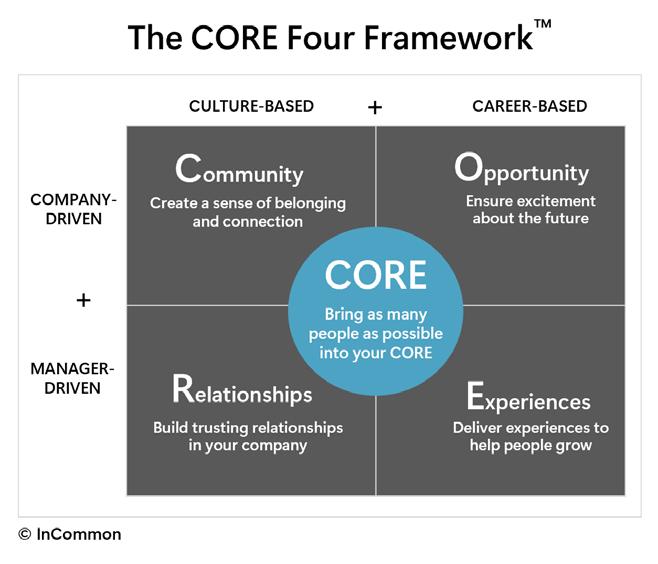
1. Community: Creating a strong sense of community is mission-critical for revitalizing company culture and driving employee
engagement. A deep sense of belonging has always been one of the most compelling reasons that people stay with a company. When it is absent, employees are more likely to seek opportunities elsewhere. Humans have an innate desire to feel accepted and respected within their peer groups, making community a fundamental need. However, building and maintaining a sense of community is now more challenging than ever. The traditional ways of working together have evolved, and hybrid or remote work has become the new norm. To address these changes, leaders must adopt innovative approaches that acknowledge the transformation that’s taken place in the workplace.
2.
Opportunity: A survey from the Pew Research Center analyzing the key reasons why employees chose to leave their company during the Great Resignation, highlighted lack of opportunities for advancement as one of the primary reasons employees looked elsewhere. As employers look to evolve their company for the future of work, leaders must recognize that the absence of opportunities is a significant driver of attrition, and a lack of communication regarding workers’ career progression exacerbates the issue.
To retain talent and foster a sense of belonging, leaders must establish an ongoing dialogue that clarifies employees’ career prospects and builds excitement about their future at the company. This process should involve regular conversations between employees and their managers to ensure alignment between individual aspirations and the company’s trajectory. Traditional notions of climbing the career ladder are evolving, requiring a more realistic and flexible approach to career progression.
3.
Relationships: The importance of relationships in the workplace cannot be overstated. Trusting relationships with colleagues
Leadership Excellence presented by HR.com October 2023 32 Submit Your Articles The Four CORE Components Needed To Shift Companies Forward For The Future Of Work
is a cornerstone of both a successful company and a career. For example, a recent Gallup study highlights the significant benefits of workplace friendships, demonstrating that employees with a best friend at work are more engaged with customers, exhibit higher productivity, innovate more, and are more likely to recommend their company as a great place to work. They also report higher levels of job satisfaction, contributing to increased productivity.
To address this key component of the employee experience, leaders must foster an environment where genuine relationships can thrive. Encouraging team members to connect on a personal level, both in the office and in virtual settings, can lead to improved

job satisfaction and retention rates.
4. Experiences: Our employee research also revealed that fewer than one in five employees strongly agrees that they are gaining the experiences necessary to enhance their skill sets and advance their careers. This underlines the importance of providing growth opportunities to employees, ensuring they feel part of the core of the company. Learning and growth accelerate dramatically through experiences, emphasizing the need for organizations to create deliberate and intentional opportunities for employees to develop new skills.
keep employees motivated. When people feel that they are continually learning and growing, they are more likely to remain engaged and committed to their jobs.
In a rapidly changing work landscape, leaders must recognize that the key to addressing worker discontent lies in embracing the CORE principles: Community, Opportunity, Relationships, and Experiences. The CORE framework captures the four core components that are evergreen when it comes to company culture. Each component applies to the current work environment as well as the future work environment and provides a formula to help create a company and a culture that is built to last across ongoing shifts and regardless of company size, industry or work setting and location.
Companies must make it a priority to offer a variety of experiences within and across roles to prevent stagnation and
Dan Michelson is the CEO and Founder of InCommon and the best-selling author of Holy Shift! Moving Your Company Forward to the Future of Work. He has a 20+ year track record of helping to build high-performing, high-growth companies with world-class cultures.
Would you like to comment?

Leadership Excellence presented by HR.com October 2023 33 Submit Your Articles
The Four CORE Components Needed To Shift Companies Forward For The Future Of Work
The State of Employee Retention
VIRTUAL
The State of Legal, Compliance and Employment Law
View our Upcoming Virtual Conference Schedule and Register Today!
October 18
October 19, 2023
-
October 23, 2023
View our Upcoming Webcasts Schedule and Register Today!
VIRTUAL EVENTS & HR.COM WEBCASTS UPCOMING www.hr.com/upcoming_webcasts www.hr.com/virtualconferences
12:00 PM
1:00
Cannabis Use & Employee Health: Guiding Employers on Chronic Illness and Legal Implications REGISTER
PM ET
11:00 AM
12:00
ET REGISTER
The State of Retention: How to become an employer of choice in the new world of work
-
PM
1:00 PM - 2:00 PM ET REGISTER WEBCASTS HR Skills and Education Nov 1, 2023
The Power of Productive Meetings: Unlocking Success Through Purposeful Collaboration
10:00 AM - 11:00 AM ET WEBCASTS
EVENTS
Oct 18, 2023 REGISTER
EOR - Navigating the benefits and considerations of having one global provider Oct 25, 2023 REGISTER REGISTER
October 24, 2023 REGISTER
Thank you for partnering with us!
Circa provides OFCCP compliance management and recruiting technology solutions to deliver qualified candidates on a level, equitable playing field for organizations.


Designing better ways to work by providing cutting-edge products and exceptional experiences within HR, Talent, Time Management, Benefits and Payroll.

LEARN MORE
THANK YOU PARTNER WITH US
LEARN MORE
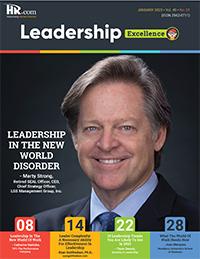






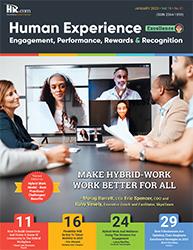


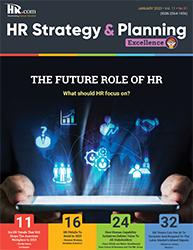


Like to submit an article? Use our online submission form or for more information go to www.hr.com/ExcellencePublications Publications 13 Targeted Publications to Reach Your Audience Informing, Educating, Enlightening and Assisting HR professionals in their personal and professional development, the Excellence series offers high-quality content through the publications!




 - Robert L. Dilenschneider, Founder, The Dilenschneider Group
- Robert L. Dilenschneider, Founder, The Dilenschneider Group



















 Dave Ulrich
Rensis Likert Professor, Ross School of Business, University of Michigan Partner, The RBL Group
Julie Winkle Giulioni Author, Virtual /Live Keynote Presenter, Inc.’s Top 100 Leadership Speakers
Dr. Beverly Kaye CEO, BevKaye&Co.
Dave Ulrich
Rensis Likert Professor, Ross School of Business, University of Michigan Partner, The RBL Group
Julie Winkle Giulioni Author, Virtual /Live Keynote Presenter, Inc.’s Top 100 Leadership Speakers
Dr. Beverly Kaye CEO, BevKaye&Co.

 By Heide Abelli, SageX Inc
By Heide Abelli, SageX Inc















 By Diane O’Connell, Sorting it Out, Inc.
By Diane O’Connell, Sorting it Out, Inc.



 By Patrick Esposito, ACME General Corp.
By Patrick Esposito, ACME General Corp.






















